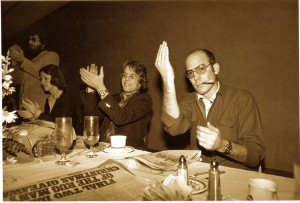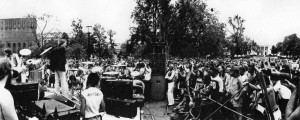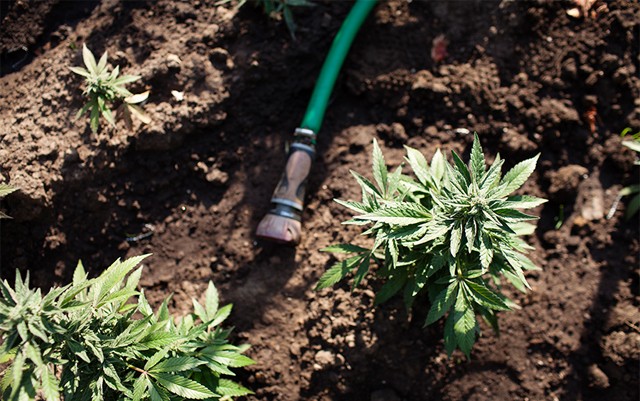Cannabis activism is something that shouldn’t even exist. Think about it: if cannabis had never been made illegal you wouldn’t be reading this story. The Marijuana Times would probably not even exist; the cannabis market would already be flooded by publications focused on cutting edge growing issues, new research and new strains. There would be no talk of voting, ballot boxes, legislatures, protests or “getting the truth out.” The truth would already be out, and would have been out for decades.
But you are reading this, which means at some point in the past something went very wrong. A mistake – or series of mistakes – that make cannabis activism necessary and inevitable. Human beings have a special aversion to being told not to do something when what they are doing isn’t hurting anyone else. When these instances arise we tend to organize and fight back.
It is this tendency that has given rise to cannabis activism.
The Early Years
Cannabis activism had a slow start for one simple reason: no one cared. When a prohibitive federal stamp tax was placed on “marihuana” in 1937 there were so few users that barely a peep was made in objection. States had been prohibiting cannabis for decades already, so the vast majority of the country was used to the idea that the devil’s weed had to be banned before it corrupted the youth of America.
This was the case until the counterculture movement that sprang up in the 1960s. Marijuana use moved out of the cities and into the suburbs, fueled by the growing outrage over the war in Vietnam and a general feeling that the “powers that be” were taking society in the wrong direction.
During this time a small group of activists began to make their voices heard. One of them was the founder of the National Organization for the Reform of Marijuana Laws (NORML), attorney Keith Stroup.
“The activists focusing on marijuana legalization,” Keith told The Marijuana Times, “outside the legalization groups, included the Hippies; the Yippies; High Times Magazine beginning in 1974; and White Panther Party leader John Sinclair from Ann Arbor, among others. It was almost entirely a counterculture scene during the early years, which is why the coat-and-tie look that we offered at NORML seemed to reach a receptive audience among the middle class. We were better-spoken and less threatening than the more colorful leaders of the counterculture.”
Keith told us about how the first real organized activism began to appear in the 1960s: “The first marijuana legalization group in the country was LeMar, a group founded in New York state in 1964, involving poet Alan Ginsburg, and his personal assistant Michael Aldrich. LeMar (for Legalize Marijuana) eventually morphed around 1970 into Amorphia, a group that funded its legalization work by selling Acapulco Gold hemp rolling papers. They were based on the west coast and included Michael Aldrich (from LeMar) Gordon Brownell, and Mark Heuitlinger. When Amorphia had financial problems in 1974, they merged with NORML (that had been formed in late 1970) and Gordon Brownell from their group ran our west coast NORML office out of San Francisco, and Mark Heuitlinger came to DC to serve as our office manager.”
The Federal Controlled Substances Act
Around the same time as the founding of NORML, something was happening in Washington D.C.; more specifically, something was happening at the White House.
President Nixon was having problems. Vietnam was going badly, as was the economy. The damn hippies were protesting and getting the young people all riled up. So Nixon and his team needed a way to silence the hippies and the minorities, the most vocal opponents of his Administration. The way they chose was the Federal Controlled Substances Act, which put an explicit illegality of many drugs, including cannabis.
But marijuana activists were already dealing with prohibition, so little actually changed for them. “The federal Controlled Substances Act was not a major development from our perspective,” Keith said. “Beginning in 1937 with the Marijuana Tax Stamp Act, the federal government has always found a way to prohibit marijuana, either indirectly with an excessive tax; or later when a direct prohibition was adopted. It was only when Tim Leary of ‘turn-on, tune-in, and drop out’ fame was busted with a sizable amount of marijuana, coming into the country from a visit to Mexico, that the federal courts held the existing version of the law unconstitutional. So for a few months in early 1970, there was no federal anti-marijuana law. But, of course, each state had its own anti-marijuana law, so there was no noticeable difference during this short window.
“What was important to the legalization movement about the Controlled Substances Act of 1970 was the provision former congressman Ed Koch from NY successfully added language to an otherwise repugnant bill to establish the National Commission on Marijuana and Drug Abuse, a commission that, by showing the courage to issue a report that called for the elimination of all penalties for small amounts of marijuana (and for the not-for-profit transfer of personal use amounts among adults), would subsequently play a major role in getting the legalization [movement] off and running in the early 1970s.”
Just Say “No”
The promising years of the 1970s were succeeded by the doldrums of the 1980s. Talk of decriminalization fell away, replaced by the “Just Say No” philosophy of President and Nancy Reagan. Any momentum that the cannabis law reform movement had from the 70s was gone.

“We were obviously aware that most Americans, and almost all elected officials at any level, strongly opposed what we were trying to accomplish; and more than that, they feared that we were trying to destroy the country,” Keith told us. “As a result, some of the early political work was really a version of street theater, such as disrupting meetings; throwing creme pies in the face of opponents; holding smoke-ins; doing smoke-ins; and doing anything else to try to get their attention.
“We saw our mission as a significant one, and thought at the time it might take a decade to achieve! It’s now been 4 and 1/2 decades, so I think it is fair to say we were a bit naive at the start. But our naivety was likely a requirement to challenge marijuana prohibition at the time.”

But activists were not deterred; they knew they had time on their side. “We knew all along that we would win, because of the demographics,” Keith said. “For years, young Americans have had no problem with marijuana legalization, whether they smoke or not; it is the older folks — my contemporaries — who’s still have trouble acknowledging that marijuana is okay. So we have known for some time that we are winning this long fight to end prohibition, but I was not sure I would live long enough to see it.”
Resurgence
The 1990s brought about a resurgence in the cannabis activism movement. The election of Bill Clinton stripped away the veneer of Reagan-Bush dominance and caused the movement to regroup for a new push to end prohibition.
As Keith tells us, this was the time that more groups began to organize. “That is the brief history of the organized legalization groups until the 1990s, when several other groups arose, including DPA, ASA, MPP, SSDP, and Leap, all of which play a helpful role in moving legalization forward.”
MPP (Marijuana Policy Project) has stepped up to be one of the leading forces in the U.S. when it comes to changing cannabis laws. Founded in 1995, when “medical marijuana was illegal in every state, and favorable legislation had not been introduced in Congress in a decade,” as they point out on their website, MPP has seen and been a part of a multitude of law changes that have resulted in less cannabis prohibition overall.
“While MPP’s mission statement has been somewhat simplified over the years, our ultimate goal has remained unchanged,” Morgan Fox, the Senior Communications Manager at MPP, told The Marijuana Times:
- Increase public support for non-punitive, non-coercive marijuana policies.
- Identify and activate supporters of non-punitive, non-coercive marijuana policies.
- Change state laws to reduce or eliminate penalties for the medical and non-medical use of marijuana.
- Gain influence in Congress.
“MPP and MPP Foundation envision a nation where marijuana is legally regulated similarly to alcohol, marijuana education is honest and realistic, and treatment for problem marijuana users is non-coercive and geared toward reducing harm,” Morgan said.
Check out Part 2: A Brief History of Cannabis Activism, where we will pick up with Prop 215.






